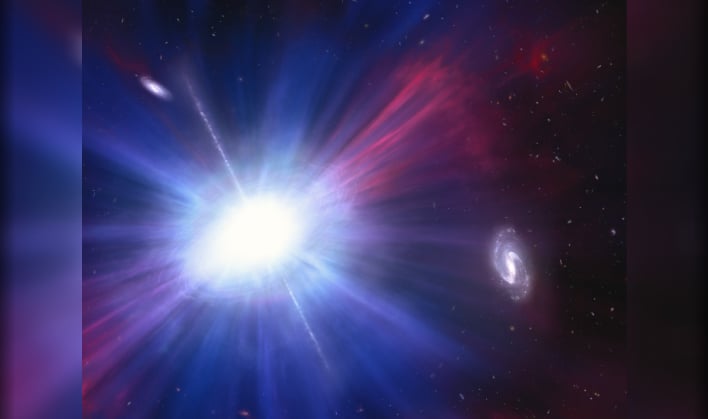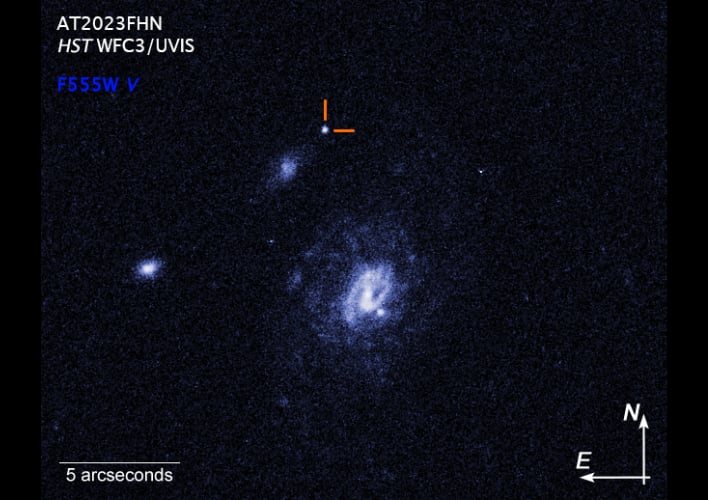NASA's Hubble Telescope Observes A Huge Bizarre Intergalactic Explosion

The first LFBOT was detected in 2018. While there are several theories behind what causes these explosions, the latest known one has placed an even greater veil on these mysterious, powerful explosions in our solar system. This gives astronomers even more reason to want to discover more LFBOTs so that theoreticians have more opportunities to characterize the population of these transient events.
LFBOTs are described by NASA as among the brightest known visible-light events in the universe, exploding unexpectedly like the flashes of paparazzi flashbulbs on the red carpet. Only a tiny amount has been detected since the first discovery in 2018, an event that occurred about 200 million light-years away and was given the nickname "the Cow."

"The more we learn about LFBOTs, the more they surprise us," explained Ashley Chrimes, lead author of the Hubble paper reporting the discovery. "We've now shown that LFBOTs can occur a long way from the center of the nearest galaxy, and the location of the Finch is not what we expect for any kind of supernova."
With the latest discovery, astronomers and scientists think they could be the result of stars being torn apart by an intermediate-mass black hole (between 100 to 1,000 solar masses). They hope that NASA's Webb telescope could use its high resolution and infrared sensitivity to eventually find that the Finch exploded inside a globular star cluster in the outer halo of one of the two neighboring galaxies. According to NASA, a globular star cluster is the most likely place an intermediate-mass black hole could be found.
Chrimes adds that the discovery of the Finch poses more questions than answers. She says more work needs to be done to determine precisely which explanation is correct.

